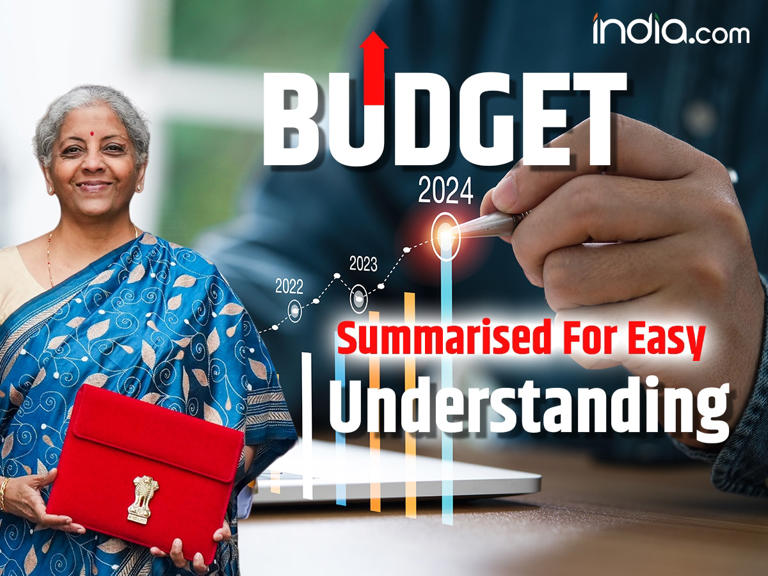
Key Points from Budget 2024: Economic Growth, Fiscal Estimates, and Policy Directions
Finance Minister Nirmala Sitharaman, in her presentation of the Interim Union Budget for 2024-2025, announced an 11.1% increase in the capital expenditure outlay to Rs 11,11,111 crore, constituting 3.4% of the GDP. India’s Real GDP is projected to grow at 7.3% as per the First Advance Estimates for FY 2023-24, in alignment with the RBI’s upward revision from 6.5% to 7%. The IMF anticipates India becoming the third-largest economy by 2027, and various international agencies project growth rates ranging from 6.1% to 6.7% for 2024-25.
Sitharaman highlighted the buoyancy in revenue collections, noting the seventh instance of GST collection surpassing Rs 1.6 lakh crore, standing at Rs 1.65 lakh crore in December 2023. The total receipts, excluding borrowings, and total expenditure for 2024-25 are estimated at Rs 30.80 lakh crore and Rs 47.66 lakh crore, respectively, with tax receipts at Rs 26.02 lakh crore.
A significant announcement included the continuation of the scheme providing 50-year interest-free loans for capital expenditure to states, with a total outlay of Rs 1.3 lakh crore. Sitharaman emphasized fiscal consolidation, with the fiscal deficit estimated to be 5.1% of GDP in 2024-25, aligning with the target set in the Budget Speech for 2021-22.
Other noteworthy announcements encompassed the establishment of a Rs 1 lakh crore corpus for tech-savvy youth through a fifty-year interest-free loan, and the implementation of three major economic railway corridor programs for Railways. The Minister emphasized the Government’s commitment to making the eastern region a powerful driver of India’s growth, with schemes like PM Awas Yojana (Grameen) nearing the target of three crore houses.
Tax-related measures included the extension of certain tax benefits for Start-Ups and investments by sovereign wealth or pension funds until March 2025. Sitharaman announced the withdrawal of outstanding direct tax demands up to Rs 25,000 for the period up to the financial year 2009-10 and up to Rs 10,000 for financial years 2010-11 to 2014-15, benefitting around a crore taxpayers.
The Minister laid emphasis on the transformative impact of GST on trade and industry, noting a doubled tax base and an almost doubled average monthly gross GST collection of Rs 1.66 lakh crore. She highlighted a decline in import release time in customs, reflecting facilitation of international trade. The Interim Budget also mentioned the government’s plan to release a white paper to draw lessons from economic management up to 2014.



Leave a Reply